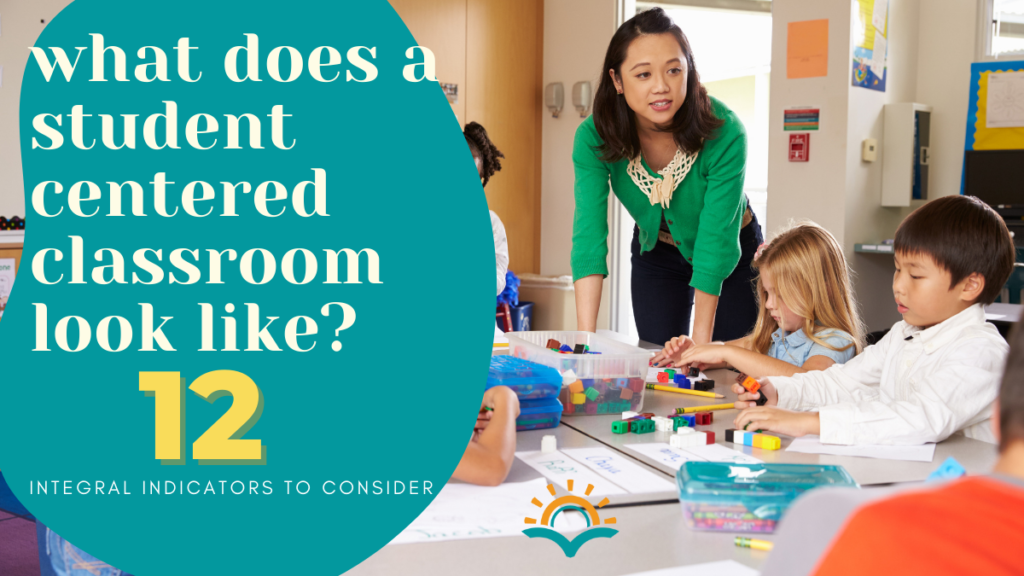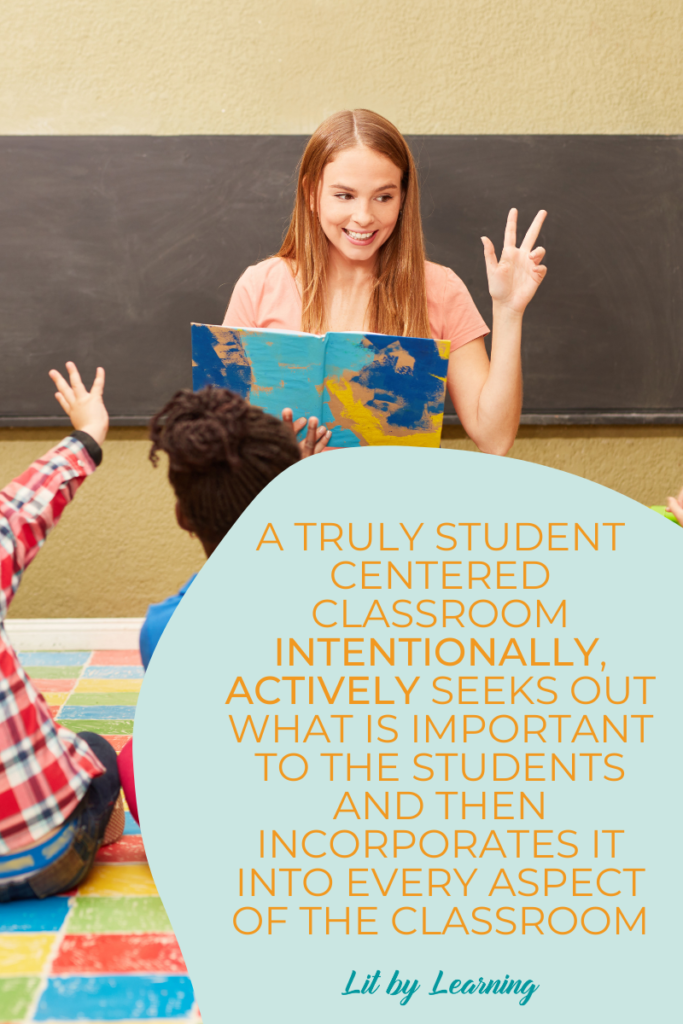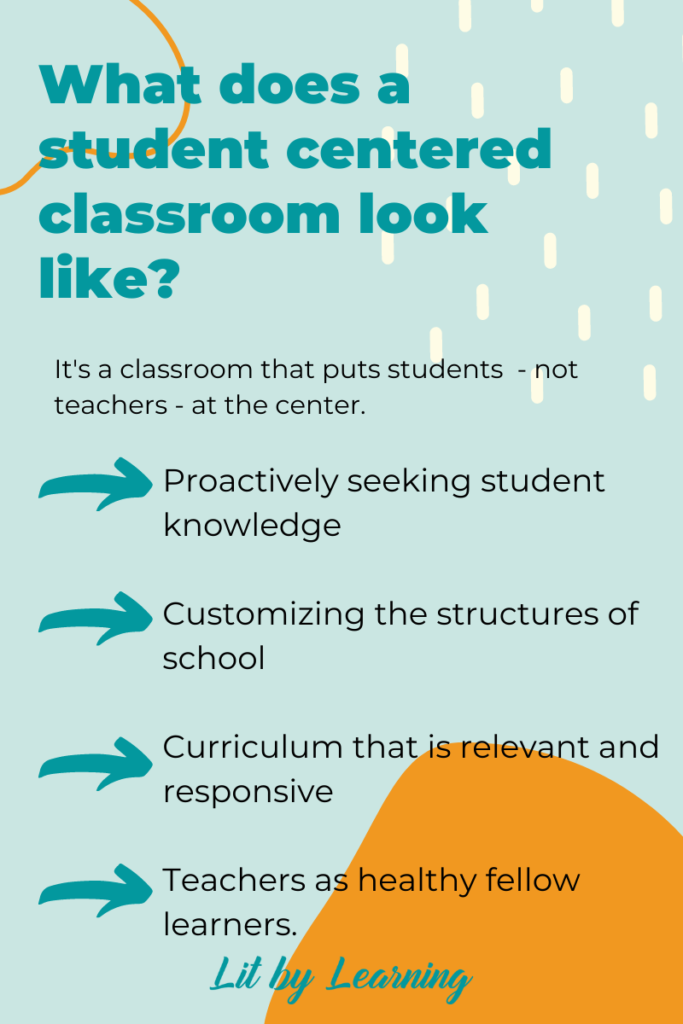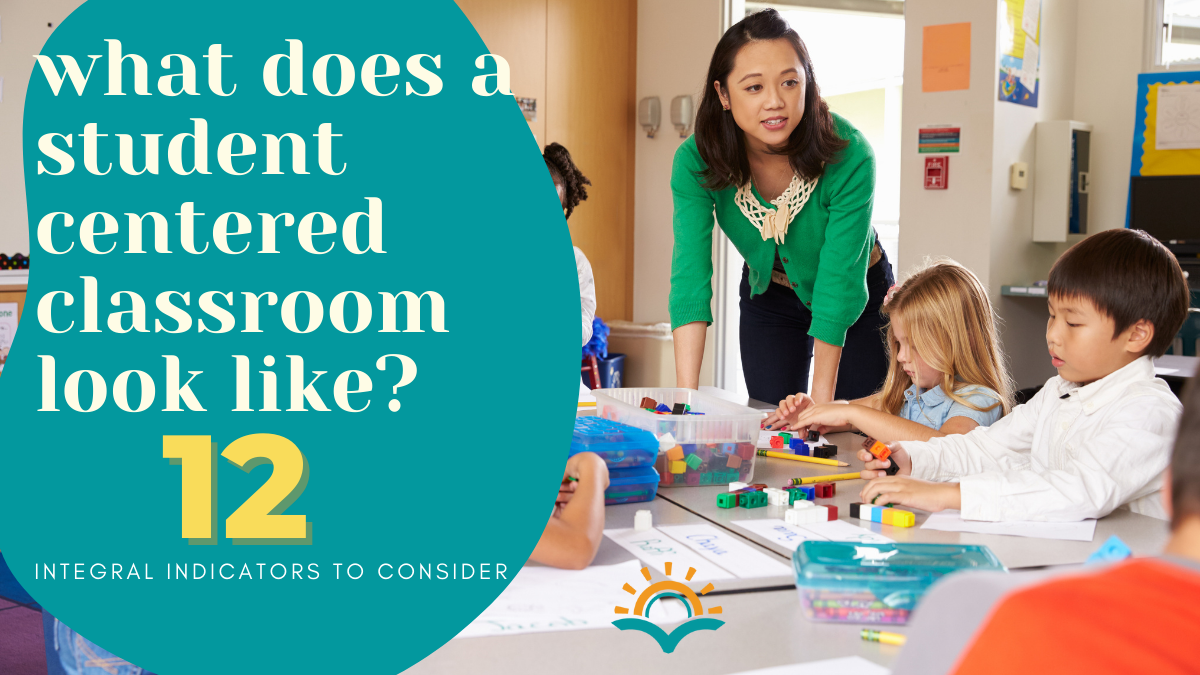
Most early elementary teachers are on board with the idea of a student centered classoom. But… what does a student centered classroom look like – in the real world? Read below for 12 indicators of a truly student-centered classroom.
What is a student centered classroom?
A student centered classroom is one where the students – your students – are at the center of all you do. That may sound obvious, but a truly student centered classroom intentionally, actively seeks out what is important to the students and then incorporates it into every aspect of the classroom. Yes, a student centered classroom is tuned in to students in every way – from the day’s schedule to the content that is taught.

In the same vein, student centered education actively decenters the teacher and even (gasp!) the traditional curriculum in order to focus on what THESE students need at THIS time. It prioritizes what works for the learners over what feels most comfortable for the instructor. It unseats the teacher as expert and creates space for the brilliance of the students. In a student centered classroom, the students are afforded trust in all respects from procedures to their own learning.
What does a student centered classroom look like?
The truth is, a student centered classroom should look different in every situation because (pause for effect) the students are different! My student centered classroom changes year to year because my students’ cultures, interests and needs vary. Similarly, what’s happening in our world changes constantly. Last year, it made sense to study voting rights with all of the momentum and schema around the Election. This year? Students’ focus is elsewhere!
That said, there are some shared and marked characteristics of a truly student-centered classroom. This teacher-facing checklist is a great place to start to see where you are now – and give you ideas for going forward. Simply score yourself using a 1-5 on each item, keeping these questions in mind:
- Do I agree that, if this were true, it would lead to a student-centered classroom?
- How true is this of my classroom? What evidence supports my answer? Use a numerical rating, if helpful.
- Which items would MOST help move my classroom towards being more student centered?
Student Centered Classroom: Your 12 indicator checklist!

What does a student centered classroom look like? Proactively seeking student knowledge
- I know about my students’ interests, families, and cultures: You actively seek information about students throughout the year, not just as a beginning of the year scavenger hunt. Students have many supported opportunities to discuss their perspectives and viewpoints.
- I prioritize student-student discourse: You are not the one talking all the time (gulp). You proritize student-student conversations because you know it’s effective – and you trust that students are incredibly capable.
- I actively seek feedback from students and families: You check in regularly to see what is working – and what isn’t. Recognizing that families have many diverse ways of understanding the role of parents in education, you are proactive in seeking stakeholders’ feedback. You don’t wait for them to come to you!

What does a student centered classroom look like? Customizing the structures of school
- My classroom can run independently if I need to step out. You worked alongside your student to create systems and process to make the day run smoothly. Students take charge of most classroom tasks and hold one another accountable.
- Students have several low/no-risk practice opportunities before being evaluated in any way. You know the power of play and inquiry. You make it a distinct priority in your class! The vast majority of your time is spent learning (with formative assessments), not on formal assessments.
What does a student centered classroom look like? Curriculum that is relevant and responsive
- I am thoughtful about the books I invite into our classroom: You clearly understand the power of books as windows, mirrors and sliding doors. You are a strong guardian between your students and content that is harmful. You adequately prepare your students with the tools they will need to understand tricky conent.
- I regularly refresh my curriclum to make it more relevant: You really listen when students talk and are creative about how to incorporate what’s important to them with your subject matter. This can be super simple – my first graders love talking about losing teeth, so we’ll make our next graph about teeth lost. It can also go deeper – students are talking a lot about how one student gets a fidget and others don’t, sounds like we need an equity vs. equality conversation.
What does a student centered classroom look like? Teachers as healthy fellow learners
- My students see me as a fellow learner; they hear my own curiosity, joy, wonder & uncertainty. Your students are under no illusion that you know it all or that you’re the sole holder of knowledge. In contrast, they see you model curiosity and recognize when you don’t yet know something. They see you as a fellow learner (and want to be just like you)!
- My students know that failure is essential to learning. They know our classroom is a safe place to fail. You’ve explicitly affirmed mistakes and celebrated failure as part of the learning process. You highlight your own mistakes and model reflecting on them thoughtfully.
- I am pursuing my own interests outside of the classroom. You know that to connect with learners, you need to be a learner. I know the term “lifelong learner” is cliche, but isn’t that what you really desire for your students? Pursue your own interests – feel genuine curiosity! It keeps that fire lit.
- I reset to tune back in several times a day. You take the time to breathe and take care of yourself several times in your school day so that you can tune back in with your students. It is impossible to be attuned to others’ needs & moods when our feelings aren’t being recognized. You take guilt-free pauses to collect yourself and return refreshed.
What does a student centered classroom look like – for you?
If you made it through that student centered classroom checklist with every item on 5/5, I’m nailing this, I NEED to see your classroom right now. I will come sit at your feet as your willing and eager student, ready to soak in the teacher magic you’ve managed to create.
If you, like me, have several items that… aren’t quite true yet, take a deep breath. Truly student centered classrooms are a journey, not a destination. I hope that this classroom checklist helped you think about some next steps you might take. I’d also love your input: What other items would you add to this checklist? I know you have brilliant ideas that haven’t even crossed my mind yet- please share in a comment below!



